Related Research Articles
Maciste is one of the oldest recurring characters of cinema, created by Gabriele d'Annunzio and Giovanni Pastrone. He is featured throughout the history of the cinema of Italy from the 1910s to the mid-1960s.

Cabiria is a 1914 Italian epic silent film, directed by Giovanni Pastrone and shot in Turin. The film is set in ancient Sicily, Carthage, and Cirta during the period of the Second Punic War. It follows a melodramatic main plot about an abducted little girl, Cabiria, and features an eruption of Mount Etna, heinous religious rituals in Carthage, the alpine trek of Hannibal, Archimedes' defeat of the Roman fleet at the Siege of Syracuse and Scipio maneuvering in North Africa. Apart from being a classic on its own terms, the film is also notable for being the first film in which the long-running film character Maciste makes his debut. According to Martin Scorsese, in this work Pastrone invented the epic movie and deserves credit for many of the innovations often attributed to D.W. Griffith and Cecil B. DeMille. Among those was the extensive use of a moving camera, thus freeing the feature-length narrative film from "static gaze".
Bartolomeo Pagano was an Italian motion picture actor.

Nights of Cabiria is a 1957 drama film co-written and directed by Federico Fellini. It stars Giulietta Masina as Cabiria, a prostitute living in Rome. The cast also features François Périer and Amedeo Nazzari. The film is based on a story by Fellini, who expanded it into a screenplay along with his co-writers Ennio Flaiano, Tullio Pinelli and Pier Paolo Pasolini.

Francesca Bertini was an Italian silent film actress. She was one of the most successful silent film stars in the first quarter of the twentieth-century.
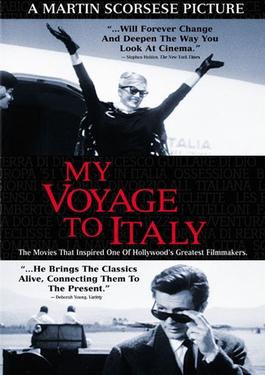
My Voyage to Italy is a personal documentary by acclaimed Italian-American director Martin Scorsese. The film is a voyage through Italian cinema history, marking influential films for Scorsese and particularly covering the Italian neorealism period.

Giovanni Pastrone, also known by his artistic name Piero Fosco, was an Italian film pioneer, director, screenwriter, actor and technician.
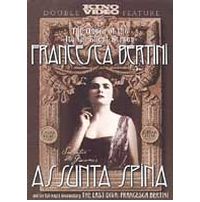
Assunta Spina is a 1915 Italian silent film. Outside Italy, it is sometimes known as Sangue Napolitano.
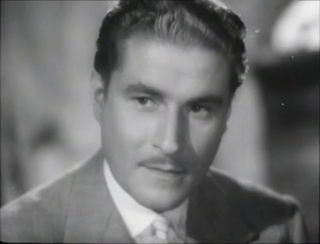
Amedeo Nazzari was an Italian actor. Nazzari was one of the leading figures of Italian classic cinema, often considered a local variant of the Australian–American star Errol Flynn. Although he emerged as a star during the Fascist era, Nazzari's popularity continued well into the post-war years.
Lieutenant Giorgio is a 1952 Italian historical melodrama film directed by Raffaello Matarazzo and starring Massimo Girotti, Milly Vitale and Paul Muller. It was shot at the Ponti-De Laurentiis Studios in Rome and on location around San Giovanni in Fiore in Calabria. The film's sets were designed by the art director Piero Filippone.
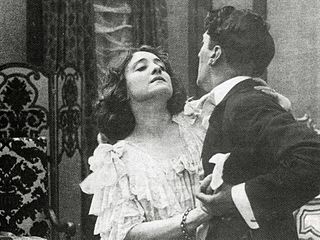
Love Everlasting is a 1913 Italian silent drama film directed by Mario Caserini and starring Lyda Borelli, Mario Bonnard and Gianpaolo Rosmino. With the possible exception of Cabiria (1914), it is the most famous of early Italian silent films. It was made in Turin by Gloria Film. Borelli's appearance in the film led to her being considered the first diva of the cinema.
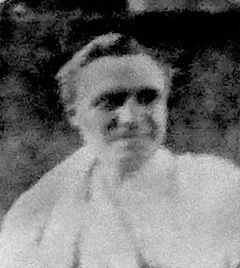
Ignazio Lupi (1867–1942) was an Italian actor and film director. Lupi appeared in more than eighty films including several historical epics such as Cabiria (1914).
Leo Catozzo was an Italian award-winning film editor. He was often credited as Leo Cattozzo. He is best known as the designer and manufacturer of the self-perforating adhesive tape film splicer known as CIR-Catozzo.

Lidia Quaranta, also known with the stage name of Lydia Quaranta, was an Italian stage and film actress of the early 20th century.
De Stefano is an Italian surname. People with the surname include:

Itala Film was an Italian film production company.
The Son of the Red Corsair may refer to:
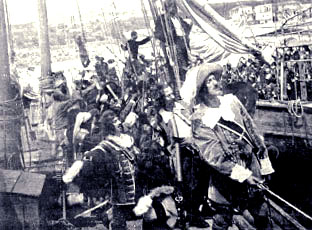
The Son of the Red Corsair is a 1921 Italian silent historical adventure film directed by Vitale De Stefano. It is an adaptation of the 1908 novel of the same title by Emilio Salgari. It was part of a series of Salgari adaptations by the Milan-based De Rosa Film. The story was subsequently remade as a sound film The Son of the Red Corsair in 1943.

Alex Bernard was a French silent film actor.

The Warrior is a 1916 film directed by Luigi Romano Borgnetto and Luigi Maggi and starring Bartolomeo Pagano in the role of Maciste.
References
- ↑ Reich p.285